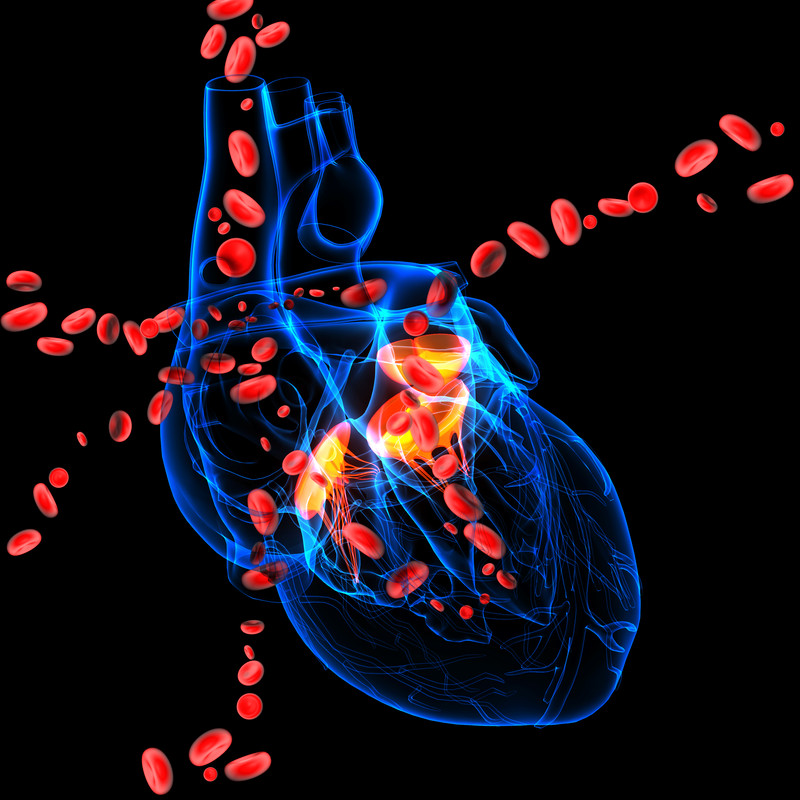Celebrity fitness trainer Bob Harper thought he was in perfect health, until he suffered a near-fatal heart attack during a workout at a New York City gym and went into cardiac arrest. After a bystander performed CPR, the host of the hit TV show “The Biggest Loser” was rushed to the hospital where he spent two days in a coma, undergoing treatment for blockages in his “widow-maker” coronary artery.
Initially, doctors were baffled, since Harper, then 51, had always passed his annual medical exams with flying colors. A year later, he learned that a $20 blood test would have revealed that he had a common, inherited cholesterol abnormality that greatly increases risk for heart attacks and strokes, often at a young age. So why wasn’t he checked for this dangerous disorder? Here’s a look at this test, why the BaleDoneen Method recommends it, and how the information it provides could help you avoid a heart attack or stroke.
A Dangerous Cholesterol That Doesn’t Respond to Statins
About 20% of Americans have elevated levels of a blood fat called lipoprotein (a) or Lp(a), a disorder that has been shown, unequivocally, to actually cause heart attacks. The BaleDoneen Method calls this inherited condition “the mass murderer” because elevated levels of this cholesterol triple risk for heart attacks, according to three large studies of nearly 45,000 people.
Unlike LDL (bad) cholesterol, Lp(a) isn’t affected by lifestyle nor can it be effectively treated with cholesterol-lowering statin drugs if it’s elevated, according to a new study published in Circulation. The researchers report that patients with one copy of the gene responsible for elevated Lp(a) levels are 58% more like to develop coronary heart disease (CHD) while taking a statin for prevention than those without the gene, while risk for CHD is more than doubled in statin users with two copies of the Lp(a) gene!
The study also found that aspirin therapy didn’t have much, if any, effect on Lp(a) levels. These findings suggest that the two drugs most likely to be prescribed for heart attack and stroke prevention are not protecting the 20% of patients with this inherited condition, most of whom are undiagnosed and unaware of their peril.
A Deadly Gap in U.S. Healthcare
In 2010, the European Atherosclerosis Society (EAS) issued a scientific statement calling for routine screening and treatment of elevated Lp(a) levels as “an important priority to reduce cardiovascular risk.” Yet in the U.S., it’s still not the standard of care to treat — or even measure — this dangerous form of cholesterol that is found at elevated levels in up to one-third of heart attack survivors.
The BaleDoneen Method often sees patients who have suffered a heart attack or stroke, or multiple events, and still haven’t been tested or treated for a cholesterol problem that has been shown to actually cause these catastrophes. Have you ever had your Lp(a) levels checked? Has your healthcare provider recommended this testing? If the answer is no, consider this: Being left in the dark about this test nearly cost Harper his life.
What Your Lp(a) Numbers May Reveal and a Potentially Lifesaving Treatment
We recommend that everyone get the Lp(a) test, which can be performed at the same time as conventional cholesterol testing. Each laboratory sets its own numbers for “normal” and “elevated” Lp(a) levels. Because this test checks for an inherited condition, if your levels are normal, there’s no need to be tested more than once because your genes don’t change.
If your levels are elevated, the best treatment is niacin (vitamin B3), which should only be taken under medical supervision. The EAS reports that niacin therapy can lower Lp(a) levels by up to 40% — a potentially lifesaving benefit. Decreasing Lp(a) was shown to reduce risk for cardiovascular events by about 75% in a recent study published in Circulation, highlighting the value of getting tested and treated if your levels are elevated.
New treatments are on the horizon that show great promise for reducing Lp(a). If your levels are elevated, discuss therapy options with your medical provider.
